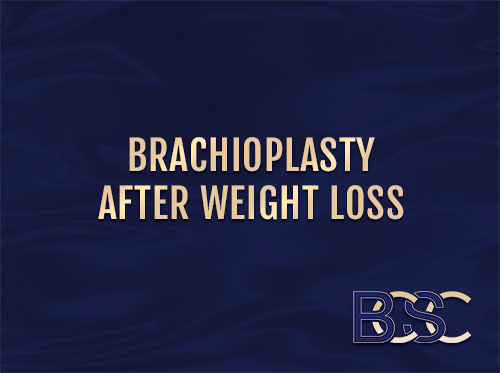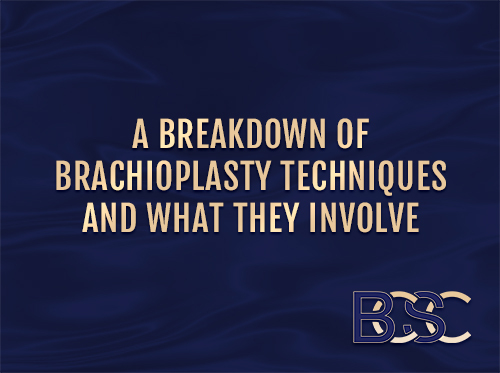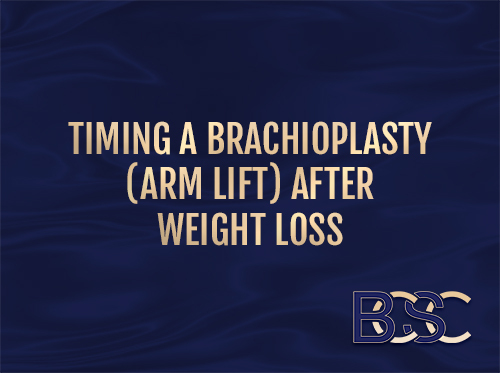Private Health Funds and Arm Lift Surgery (Brachioplasty): What You Need to Know
Brachioplasty patients with a private health fund may pay less out-of-pocket for the hospital charges if they have a gold-level cover, have skin conditions caused by excess skin after losing 5+ BMI points, and are unable to do normal daily activities. Eligible brachioplasty patients can reduce out-of-pocket costs further if they apply for a Medicare rebate (MBS Item # 30169). Health funds never cover the full cost of brachioplasty, even if it says “fully covered”.
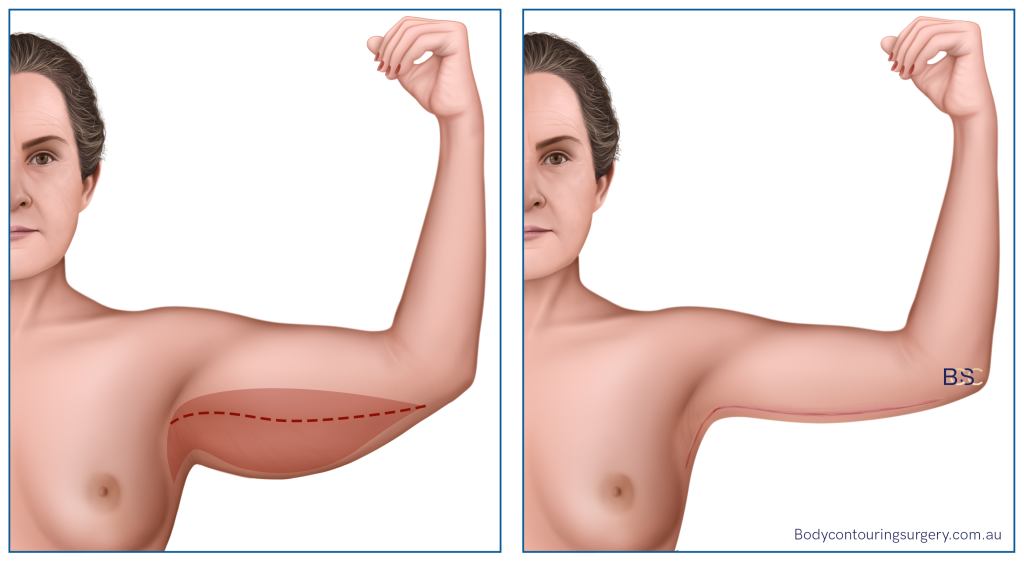
Extended brachioplasty
Brachioplasty surgery costs an estimated 5000 to 10000 AUD.
The surgeon, hospital, and anaesthetist fees are often billed separately. Actual costs vary. The most reliable way to get pricing is to ask for a price quote. Private health cover and Medicare rebates can lessen a patient’s financial burden, but only if they qualify for a medically necessary arm lift after massive weight loss.
Public vs Private Health Insurance: What is Covered in Australia?
Eligible patients can lower their out-of-pocket expenses by utilising private health insurance, the public healthcare system, or both.
- Public Healthcare System: Medicare won’t pay for elective cosmetic surgery. If the arm lift is deemed medically necessary after losing extreme weight, Medicare will pay 75 percent of the rate listed on the Medicare Benefits Schedule (MBS) as a rebate. This goes toward the surgeon and anaesthetist fees. Providers can charge more than the listed rate, so expect to pay the remainder out of pocket. The hospital charges are paid entirely out of pocket, unless the patient has a private health plan that will chip in for the hospital charges.
- Private Health Insurance: Private health insurance pays the remaining 25 percent of the MBS fee for surgeon, anaesthetist and assistant. Many health funds pay more than 100% of the scheduled MBS fee. However, you will pay a GAP for the majority of operations. Your private health insurance will cover the hospital charges if you are on the correct level of coverage. Many private health funds charge an excess before they cover the hospital fees.

Brachioplasty B&A post weight loss | BCSC
Disclaimer: Operation performed by Dr Bernard Beldholm. Adult content, surgery has risks; individual results vary, seek 2nd opinion. Please see the full disclaimer.
When is a brachioplasty medically necessary?
Private insurance typically only covers the hospital charges if the patient meets all the criteria below.
- The patient’s body mass index (BMI) has dropped at least five points.
- The weight loss is unrelated to pregnancy.
- The excess skin interferes with daily living.
- The excess tissue caused a skin condition that hasn’t resolved with conservative medical treatment.
- The patient must maintain a stable weight for six months or longer before the operation.
You will always pay some out-of-pocket costs, even for fully covered services.
Medical providers are legally allowed to charge more than the MBS fee, and they often do. Therefore, arm lift patients may still have out-of-pocket expenses.
A service that is fully covered by insurance can mislead patients into thinking they won’t pay anything out-of-pocket. This is not true. “Fully covered” means that the health fund will only cover the recommended government fee for a particular service. Private medical practices often charge more than the recommended government amount, leaving patients to pay the remainder. This is referred to as the GAP.
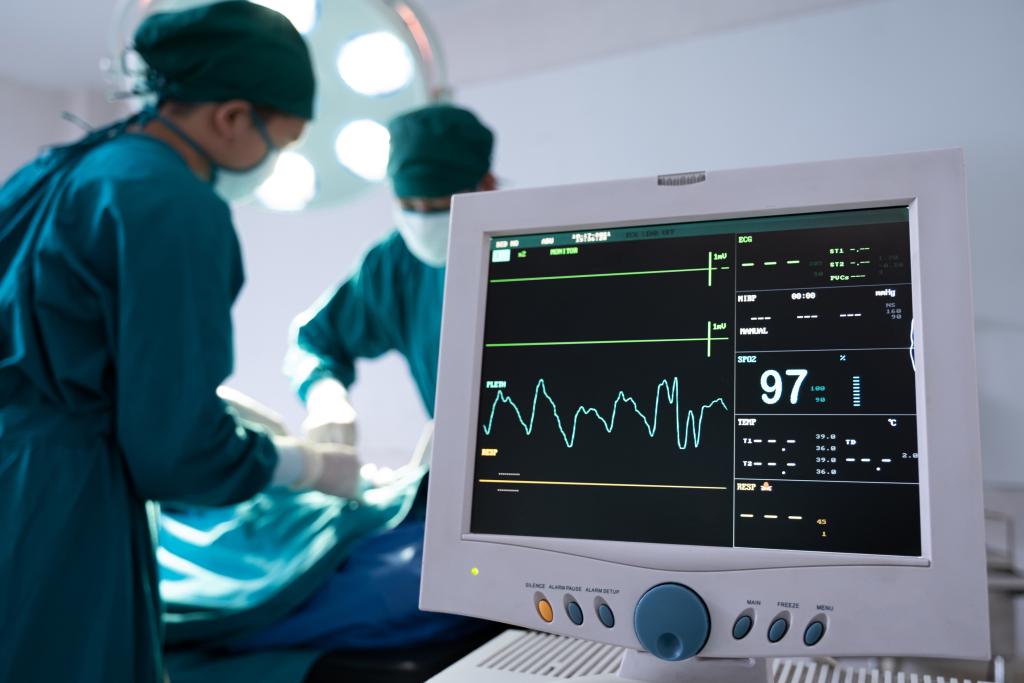
Hospital monitoring | BCSC
Private Health Insurance and Brachioplasty
A private health fund only contributes to the hospital charge. An arm lift patient will need the appropriate level of private health cover to access this benefit.
Level of Cover
In April 2020, Australian health insurers all switched their private hospital cover into a ** tiered system. The tiers are Gold, Bronze, Silver, and Basic. Gold policies are most likely to cover some of the base hospital fee for brachioplasty (arm lift surgery). Silver and bronze policies are less likely to offer this coverage. Those with a basic policy will need to upgrade their level of cover.
- Gold Hospital Cover: Many gold-level policies cover a portion of the hospital charges.
- Silver Hospital Cover: Silver-level policies may or may not cover a portion of the hospital fees.
- Bronze Hospital Cover: Patients with bronze-level plans are unlikely to have the brachioplasty hospital fee covered.
- Basic Hospital Cover: Basic-level coverage won’t chip in for the arm lift hospital fee.
Insurance Exclusions and Restrictions
Each insurance policy has different exclusions, rules, and restrictions. Here are some terms to know.
- Exclusions: Excluded services aren’t covered by the policy. The patient pays for these services entirely out-of-pocket.
- Restrictions: These services have limited coverage. A portion of the service may be covered, but the patient will pay the remainder out-of-pocket.
- Restricted Benefits: The full cost of a private hospital admission isn’t covered. The patient will pay the difference, which is known as a co-payment.
- Benefit Limitation Periods: Some benefits are temporarily reduced for a fixed length of time. After waiting, the benefits are paid at the full rate.
- Waiting Period: This is the wait time before a new health policy takes effect.
Waiting Periods
Those considering a brachioplasty may decide to buy a new policy or upgrade their existing plan to get better coverage. There is typically a waiting period before a new plan takes effect. Those making the switch may need to wait anywhere from six to 12 months before they can use their new policy toward the cost of brachioplasty.
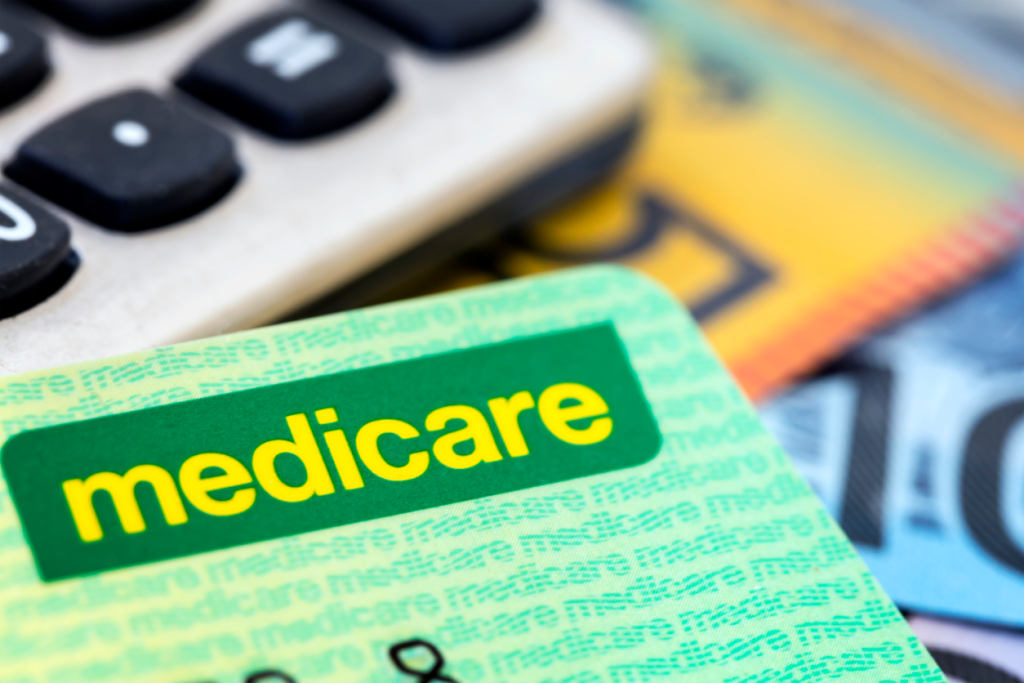
Medicare | BCSC
Medicare Rebate for Brachioplasty
Eligible patients can lower their out-of-pocket costs by applying for a Medicare rebate via Australia’s public healthcare system. The rebate is only for medically necessary services, such as excess skin removal after massive weight loss.

Item number 30169 MBS schedule | BCSC
MBS Item # 30169 (Brachioplasty)
The item number for arm lift surgery (brachioplasty) is 30169 on the Medicare Benefits Schedule. The surgeon you are referred to will assess your eligibility. The rebate is capped at 75 percent of the rate listed on the Medicare Benefits Schedule (MBS).
This item number only applies to a medically necessary arm lift after substantial weight loss (five BMI points or more, unrelated to weight loss after pregnancy). Patients should apply for MBS Item #30169 before having the operation.
Next Steps for Patients Considering Brachioplasty

GP referral | BCSC
Navigating health insurance can be tricky. If you are considering an arm lift to remove loose skin after extreme weight loss, you should speak to a specialist surgeon experienced in body contouring. You will need a GP referral first. A surgeon can provide price quotes and information about the Medicare rebate if you appear to meet the MBS criteria. It’s also a good idea to communicate with your private health fund, if you have one, to see what services they cover.
FAQs
Can you claim cosmetic surgery on private health insurance?
No, private health funds only contribute toward medically necessary services.
What is the most popular health insurer in Australia?
There are many private health funds to choose from, including Australian Unity Health, Frank Health Insurance, BUPA, GMHBA, NIB, Latrobe, AHM, etc.
What are the pros and cons of using a private health fund for brachioplasty?
Patients have a wider pool of specialist surgeons to choose from when they have a private health fund. They can also have surgery in a private hospital rather than a public one. As far as disadvantages, premiums can be costly for gold and bronze places. While basic and silver hospital policies cost less, they generally do not offer hospital cover for brachioplasty patients.
Is it better to have surgery in a public or private hospital?
The wait times in private hospitals are generally shorter than public hospitals. Many private hospitals also offer private rooms. Brachioplasty surgery is generally not done in a public hospital.
Can I change my private health plan?
Yes, but a waiting period usually applies before a new plan takes effect.
Will insurance cover the surgeon’s consultation fee?
Private healthcare plans in Australia typically do not cover the consultation fees for specialist surgeons. Medicare may contribute to the consult fee only if the patient qualifies for a medically necessary service using the appropriate MBS Item Number.
How much is the consultation fee?
Every specialist surgeon sets their own rates. The consultation fee is generally not refundable if the patient chooses not to move forward with the surgery. The fee is usually applied toward the surgeon fee, so it is not an extra expense. Instead, think of it like a small down payment toward the procedure. Fees typically range from $250 to $600.
Will insurance cover other body contouring procedures after weight loss?
If a patient has loose skin after they have lost weight, a healthcare policy may cover some of the body contouring surgery cost if the procedure is deemed medically necessary rather than cosmetic. Body contouring includes services such as abdominoplasty (tummy tucks), brachioplasty (upper arm lifts), belt lipectomy (lower body lift), etc. Each service has a different MBS item number.
What skin conditions are common after weight loss surgery?
Chafing and rashes are commonly caused by ** skin after massive weight loss. Excess skin folds are also a breeding ground for bacteria which can lead to skin infections and hygiene issues.
Will arm lift surgery remove extra fat?
An arm lift tightens and contours the upper arms; It’s not a weight-loss treatment. The ideal candidate is already at or near their optimal weight. Of course, many people retain excess fat even after nearing the ideal weight. Subcutaneous fat which underlies the skin is removed as the surgeon removes excess skin. Liposuction may be used to remove excess fat.
Can I have liposuction and an arm lift on the same day?
A surgeon may perform a liposuction-based arm lift to remove excess fat. Liposuction is generally considered a cosmetic service that isn’t covered by the public and private healthcare system.
How soon can I have an arm lift after weight loss surgery?
Weight-loss patients should wait at least a year for the skin to retract on its own. Body contouring surgery (think a tummy tuck or arm lift) can be performed to remove any extra skin that remains after that time. Patients should reach their goal weight and maintain a stable weight for six months before receiving these services.
How long do patients usually stay in hospital after arm lift surgery?
Many surgeons recommend a hospital stay of one or more nights. A mini arm lift may be performed as a day procedure in some instances.
How much do arm lifts cost?
Patients in Australia can see a specialist surgeon for a price quote after getting a referral from their general practitioner (GP). The surgical coordinator will likely provide price quotes for the hospital and anesthetist, as these services are usually billed separately from the surgeon fee.
Are arm lift scars permanent?
Like any scar, it will always be visible but it should fade with time. The size and location of the surgical scar depends on the type of arm lift. Many patients find the scar acceptable-looking once it has had time to mature.
Why is it important to quit smoking before an arm lift?
Smoking slows healing and raises the risk of surgical complications.
Will I qualify for the Medicare rebate if I didn’t have bariatric surgery?
The brachioplasty MBS rebate is available to many patients who have had weight loss surgery as well as people who lost weight the old-fashioned way.
Is surgery the only way to remove excess skin?
Many patients have ** skin after significant weight loss. A body contouring procedure (an example would be a brachioplasty or abdominoplasty) removes the excess by cutting it away and then closing the incision.

